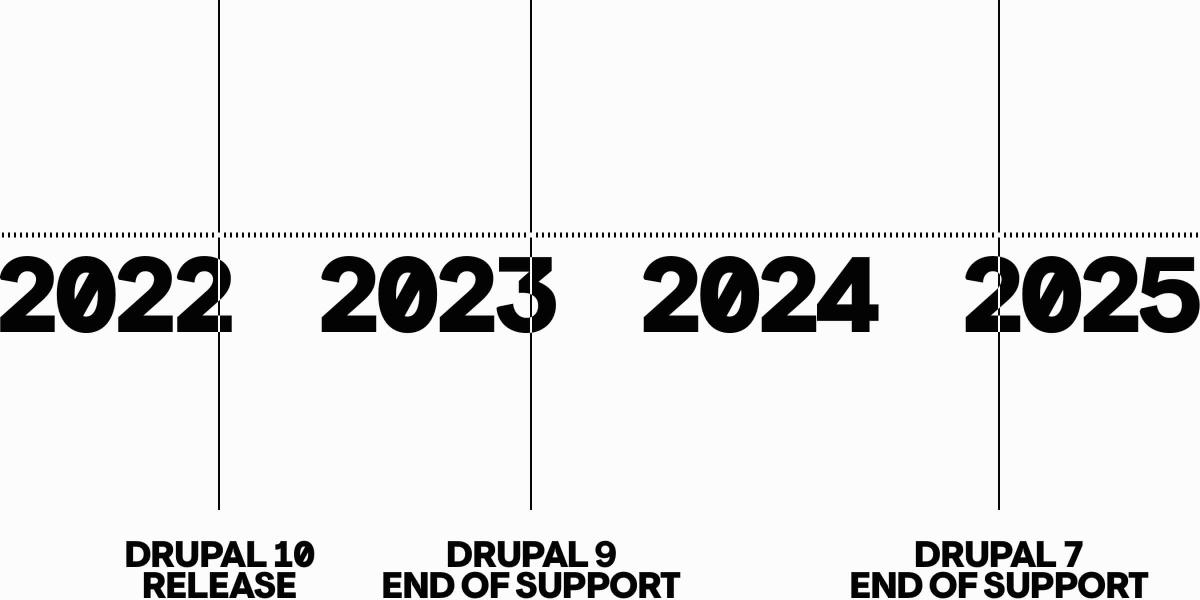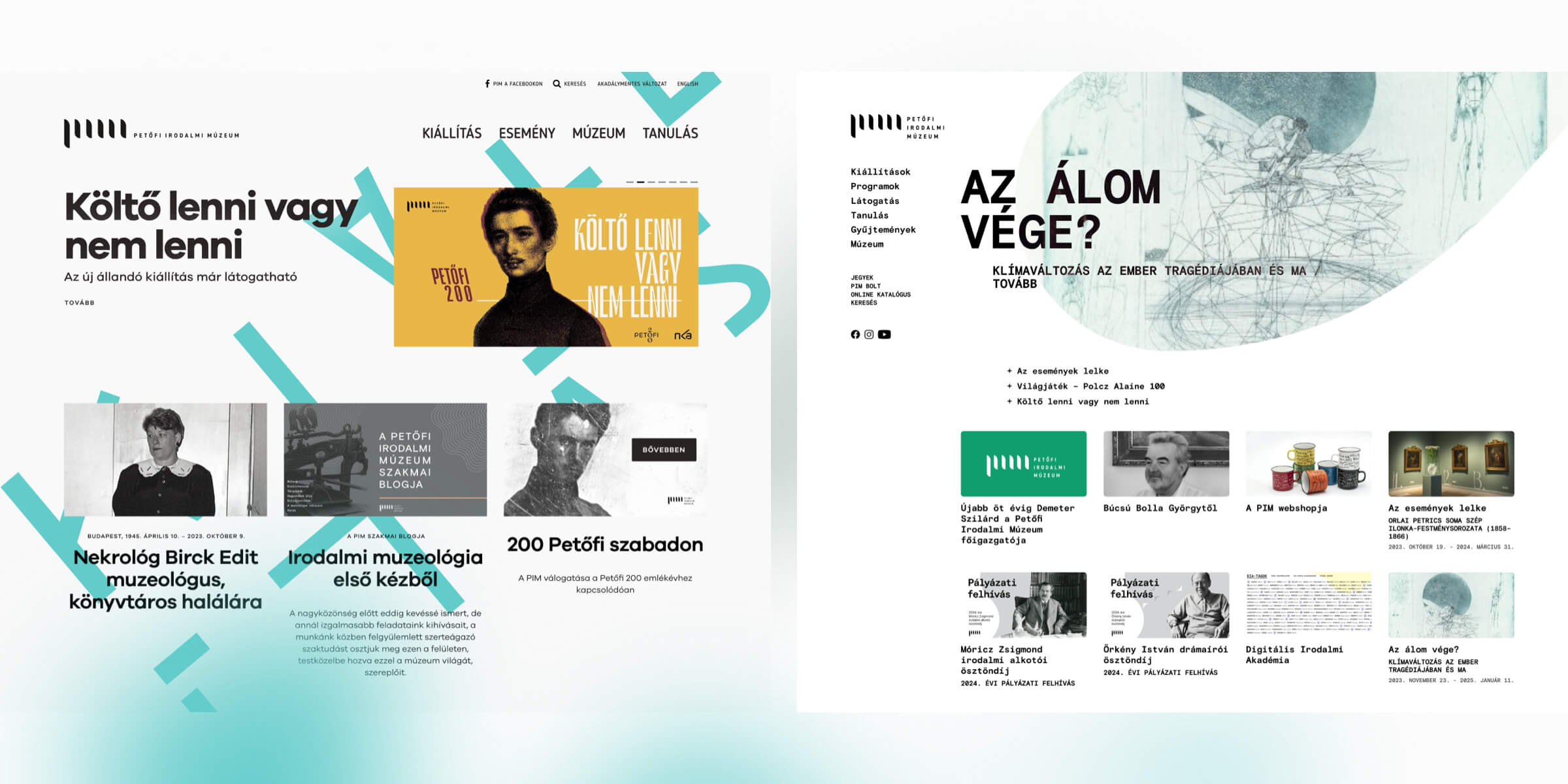
Drupal 7 was first released in 2011 and has been a popular CMS for many websites since then. 5 January 2025 marks the final extension date of Drupal 7 end of life, meaning that D7 websites will no longer receive official support or security updates from then on.
It's not just the technology that has changed
Over the years, your business had probably evolved just as much as the technology behind it. Most certainly, the business processes and landscape have also evolved. With the EOL of Drupal 7, a website rebuild is pretty much inevitable, so it's worth thinking through how you can get the best possible ROI from the process.
We are here to help you explore the opportunities of this necessary shift. Hopefully, by the end of this post, you will have a better idea of the framework itself, and what kind of cooperation you should be looking for with your partner for the transition.
The content
Make it structured, inclusive and sustainable
We've seen situations where the navigation has simply overgrown over the years, or where it got stuck in a structure that worked well 10 years ago. There are websites where the editing skills have faded so much that formerly well performing contents have disappeared. And sometimes, in the absence of proper website support, state-of-the-art contents are published on outdated interfaces that simply cannot have the desired impact.
One way or another, rethinking your content and how it’s produced is one of the first steps of revamping a website, and this will also determine your choice of framework. In addition to the questions of "what worked well" and "what didn't", it is also important to evaluate your objectives and capabilities.
A full website renewal will enable you to develop a sustainable content structure that reflects the needs of your users and aligns with your organisation's capacity, competence and ambitions.
The design
Balance between appealing and usable
A website rebuild may also be a good time to refresh your brand identity. Does your logo, colours and font stlye still express the values and feelings you would like to promote? These basic elements will largely determine the look and feel of your website.
It is worth considering that today, digital content is consumed on an increasing variety of devices, and therefore, your website must be responsive or even mobile-first. Our online reading habits have been studied from all angles in recent years, and it will certainly benefit you to publish your content around these best practices and recommendations.
In the past few years, the aspects of web accessibility and sustainability have become increasingly important, and should be taken into account as early as in the design phase. Compliance with specific standards is becoming mandatory in many fields, but enhancing the user experience and reducing the ecological footprint of your website (or app) will be appreciated both by users and search bots.
Revamping your online appearance is a complex investment, but the benefits can be just as impressive. Not only can you save on costs, but you can also maximise your impact when you opt for a complete redesign once your website is about to be rebuilt.

The functionality
Interactivity, automatisms, integrations
If you're still using your Drupal 7 website, it's probably been in service for a couple of years. Time also means experience, which you should rely on when upgrading. Take a look at the habits and feedback of your users and editors: it's almost certain that you can identify a good number of untapped opportunities and difficulties, that can be easily fixed on the new site.
The primary objective is to help your visitors find and comprehend the information they need as quickly as possible, and to make it convenient for them to access your services and products. In addition to structure and appearance, this can also be facilitated by targeted interactions and automation. Here are some questions to consider when thinking about functionality:
- Who are your target groups and what kind of interaction do you expect from them?
- How can online interfaces support this communication?
- How much human resources are needed to serve the users?
- Are there other systems and/or online interfaces that are involved in the process?
You can significantly boost website conversions by approaching your website as a key component of a complex system, and supporting the flow of data or even users with well designed processes and/or system integrations.
The partnership
Autonomy and collaboration
If you are going to renew your site, you should not only look ahead in terms of design and development, but also consider the support you might need in the years to come. Has collaborative thinking, continuous adaptation, technological support been important in the past? Or maybe you have experienced that development ideas got stuck, due to lack of support?
Continuous updates and maintenance - depending on the framework - help your website be stable, secure and fast and remain compatible with the constantly evolving web environment and third-party services. Good support services also make room for smoother development in case of new requirements. A dedicated website partner can also provide competencies that are not available in-house. They can proactively advise on areas for improvement, backed by metrics, or support your editorial team to create and maintain an optimised user experience.
A well-functioning website requires constant care. If the necessary capacity and competence are not available in-house, it may be worth considering long-term partnerships with a website development agency.
The framework
Drupal, Wordpress, Squarespace and others
Even if Drupal 7 was a valuable resource for your organisation in the past few years, you may not need Drupal, or Drupal alone, in the future. With three major version changes, the framework has evolved a lot; nevertheless, it is possible that something else would suit you better.
For more complex web applications, you may want to consider using a different framework (e.g. Vue.js), while for simpler sites, it may be more cost-effective to use Wordpress. If your online presence is less pronounced, or uniqueness is not that important, you can even explore a subscription based website builder (e.g. Squarespace, Webflow).
For a monthly or yearly fee, you can build your website even without a designer and developer, although this is not something we would recommend. You will get ongoing maintenance, continuous support and integrations that can be activated with a few clicks, but you may encounter limitations that can cause significant difficulties in your day-to-day operations. Moreover, you will not have access and control over your website's database and codebase.
Drupal CMS is still an ideal solution for organisations who would like a customised experience built for scalability.
Migrating to Drupal 10
Worth thinking in a broader perspective
Drupal 8 and the following versions significantly shifted in terms of organising content and configuration. Instead of the traditional route of simply updating your existing Drupal 7 site, it is inevitable to rebuild functionalities and appearance using Drupal 10.
Below is the summary of the main steps to ensure safe and cost-effective migration of your website, and why it is worth to consider the implementation of a new design with your future goals in mind:
- Audit your Drupal 7 site to learn about its current state. List all functionalities and entity types (content types, taxonomies, paragraphs) to see which modules are used and in what condition they are. This is the time to identify and list all unique solutions.
- Create a modules checklist and identify which contrib modules have to be updated or replaced, and which custom codes or modules can be replaced with well-working contrib (or sometimes core) solutions.
- Take a look at the lessons learned from previous years and your plans. This is the time to re-think and align the structure and architecture of your new site with your future plans.
- The theming layer of the new website must be rebuilt entirely. This is the perfect moment to take a look at your design and revamp your visual concepts (or go for a complete makeover if you like).
- Adapt the available migration solutions and scripts to the structure of the old and the new site: in many cases, the migration process can be fully automated.
- Stay on board for testing. Meticulous testing and boffixing should be done in parallel with the implementation, so as to keep the development agile and ensure the timely lauch of your new site.
We hope to have given you some ideas on how to move forward. If you still have questions, feel free to contact us and let's start the conversation.
Share with your friends!